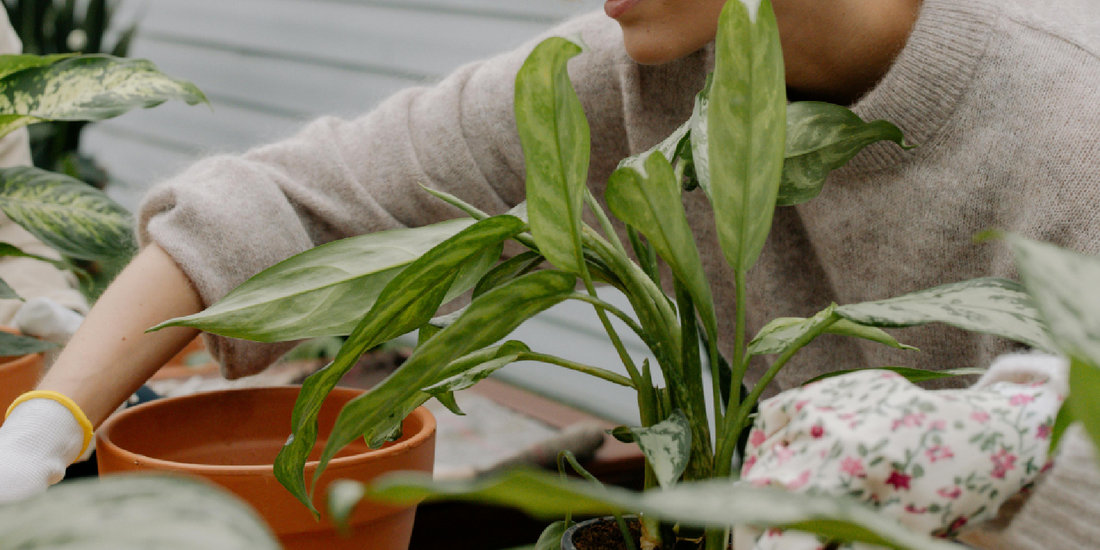
What Color Grow Lights Do Plants Need?
Share
Lighting is the heartbeat of any indoor garden—but not all light is created equal. If you're using grow lights to raise herbs, succulents, or foliage on a shelf system like the amoyls VerdantGlow S-Shaped 8-Tier Plant Shelf, understanding light color (or spectrum) is crucial to success.
So, what color grow lights do plants actually need? The answer lies in plant biology and the Photosynthetically Active Radiation (PAR) spectrum. In this guide, we’ll break down what each light color does, when to use it, and how full-spectrum grow lights like those on the VerdantGlow shelf provide the perfect balance for all your indoor plants.
🌈 Light and Plant Growth: A Quick Overview
Plants use light energy to perform photosynthesis—converting light, carbon dioxide, and water into sugars to grow. But not all wavelengths (colors) of light are equally useful.
The PAR range (400–700 nm) contains the most photosynthetically active light. Within this range:
- Blue light (400–500 nm) supports leaf and stem growth
- Red light (600–700 nm) encourages flowering and fruiting
- Green light (500–600 nm) is less absorbed, but still contributes to overall light exposure and leaf development
🧠 Think of it this way:
- Blue = structure & shape
- Red = bloom & fruit
- Full-spectrum = balance & health
🔵 Blue Light: The Growth Engine
Blue light is the first essential spectrum in indoor plant care. It:
- Stimulates chlorophyll production
- Encourages short, strong stems and lush leaves
- Prevents “legginess” (long, weak stems)
- Is crucial in early plant stages (seedlings & vegetative growth)
📘 Best for:
- Herbs
- Leafy greens
- Indoor foliage
- Succulent rosettes
📏 Distance tip: Keep blue light 6–12 inches from plant tops for best absorption.
✅ On the VerdantGlow shelf, blue wavelengths are built into the full-spectrum lighting, ideal for compact growth on every tier.
🔴 Red Light: The Flowering Booster
Red light plays a different role in plant development. It:
- Stimulates stem elongation
- Promotes flowering and fruit production
- Enhances leaf size in mature plants
🌺 Red light is most effective:
- In the blooming phase of plants
- When combined with blue light to balance leaf and stem development
🧪 Alone, red light can make plants tall and weak. That’s why it’s best used in combination, not isolation.
✅ VerdantGlow’s grow lights combine red and blue to support the full plant life cycle—from sprout to bloom.
🟣 Purple Light: What Happens When You Mix Red + Blue?
Many LED grow lights emit a purple or pink hue, created by mixing red and blue LEDs. While effective, purple lights:
- Are not always aesthetically pleasing in living spaces
- Can cause eye strain with long exposure
- Don’t provide the visual cues for plant health (hard to spot yellowing or pests under purple)
That’s why modern growers are moving toward full-spectrum white light, which includes red and blue, without the harsh purple tone.
🤍 Full-Spectrum Light: The All-In-One Solution
Full-spectrum grow lights mimic natural sunlight, combining:
- Blue light (growth)
- Red light (flowering)
- Green light (visual clarity + secondary growth support)
- Other wavelengths for balance
🌞 Benefits of full-spectrum lighting:
- Supports every stage of growth
- Ideal for mixed plant types on one shelf
- Provides natural color rendering—see plant health clearly
- Looks better in living rooms or kitchens
✅ The amoyls VerdantGlow Shelf uses full-spectrum LEDs, making it ideal for both visual appeal and high plant performance.
🌿 What Light Colors Do Different Plants Need?
Let’s break it down by common indoor plants:
|
Plant Type |
Best Light Color |
|
Herbs (basil, parsley) |
Blue + Red (Balanced Full-Spectrum) |
|
Leafy greens (lettuce, kale) |
Blue dominant |
|
Succulents & cacti |
Blue + Red (with higher blue) |
|
Flowering plants (orchids) |
Red-rich Full-Spectrum |
|
Tropical foliage (pothos, monstera) |
Balanced Spectrum |
🛠️ Matching Shelf Tiers with Light Needs
With the VerdantGlow S-Shaped Shelf, you can group plants by light preference:
- Top tiers (closer to lights): Light-demanding herbs and succulents
- Middle tiers: Leafy greens and small flowering plants
- Lower tiers: Shade-tolerant plants like snake plants and pothos
Each tier has its own integrated full-spectrum light, ensuring every plant gets the right color and intensity without manual adjustments.
🧪 What About Green Light?
It’s a common myth that plants don’t use green light. In reality:
- Green light penetrates deeper into leaves than red or blue
- Supports lower canopy development
- Helps light reach all parts of larger or bushy plants
Green light is part of full-spectrum grow lights and should not be excluded.
❌ Mistakes to Avoid
- Using only red light → Leads to weak, floppy stems
- Using purple light in living areas → Poor aesthetics and eye fatigue
- Overexposing plants → Too much of any light = stress
- Ignoring plant needs → Not all plants need high red light levels
🔍 Watch your plants: Yellowing leaves? Stretching? Poor flowering? These are cues to adjust light color or duration.
⏱️ Duration Still Matters
Even with the right color, light must be timed properly. Plants need darkness to:
- Release growth hormones
- Regulate respiration
- Avoid stress
💡 General light schedule:
- 12–14 hrs of full-spectrum light
- 10–12 hrs of darkness
- Use smart timers for accuracy and automation
🪴 How VerdantGlow Simplifies It All
The amoyls VerdantGlow Shelf offers:
- ✅ Integrated full-spectrum LEDs
- ✅ Each tier perfectly spaced for light intensity
- ✅ Aesthetic design that suits any room
- ✅ Easy setup with timer-friendly power
- ✅ No need to buy separate blue/red lights or adjust color manually
It’s everything you need in one sleek, modern system—designed for both performance and beauty.
🧘 Final Thoughts
So, what color grow lights do plants need?
🌈 The answer is: all of them—in the right balance.
- Blue for growth
- Red for blooming
- Green for depth
- Full-spectrum for everything in between
Instead of complicating your setup with single-color bulbs, opt for a smart, efficient solution like the VerdantGlow Shelf, which delivers balanced lighting to every tier—so you can grow confidently, season after season.
Want to upgrade your plant care game?
Explore the VerdantGlow Collection and give your plants the color, intensity, and consistency they deserve.
For more growing tips, visit the amoyls Blog and become a plant-light pro today.
